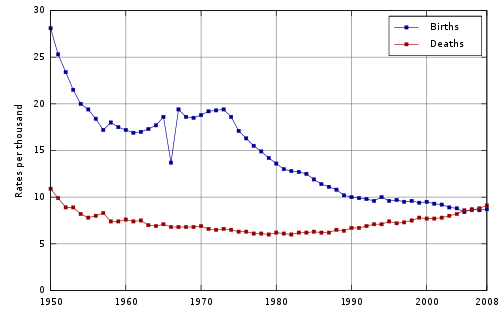This article may need to be rewritten to comply with Wikipedia's quality standards.(July 2013) |
| This article is part of the series |
| Decades in Japan |
|---|
 |
The 2000s in Japan began with hope and optimism for the 21st century and ended with the late-2000s recession.
Contents
Gaming systems like the PlayStation 3, [1] the Wii, [2] and the Nintendo DS [3] continued to help generate the profits of Japan-based electronic companies like Nintendo and Sony. Video games released and/or developed in Japan would see an improvement with their physics engines, their artificial intelligence, and see their graphics become high definition. [4] [5] Many young people would live with their parents and spend their time reading manga and watching anime due to the lack of employment for young people in Japan during this decade.
The average price of gasoline at the end of the 2000s would be $8/gallon; making it unaffordable for most Japanese people to drive long distances unless necessary. [6]
Some examples of anime of the 2000s would include Bleach , One Piece , Kirby of the Stars , [7] Sonic X , Tokyo Mew Mew , [8] Ojamajo Doremi , Gurren Lagann , and Kodai Ōja Kyōryū Kingu . Most of these anime shows mentioned here would also go on to relative success in North America and Europe in the 2000s. For example, Tokyo Mew Mew became Mew Mew Power while Ojamajo Doremi became Magical Doremi.

